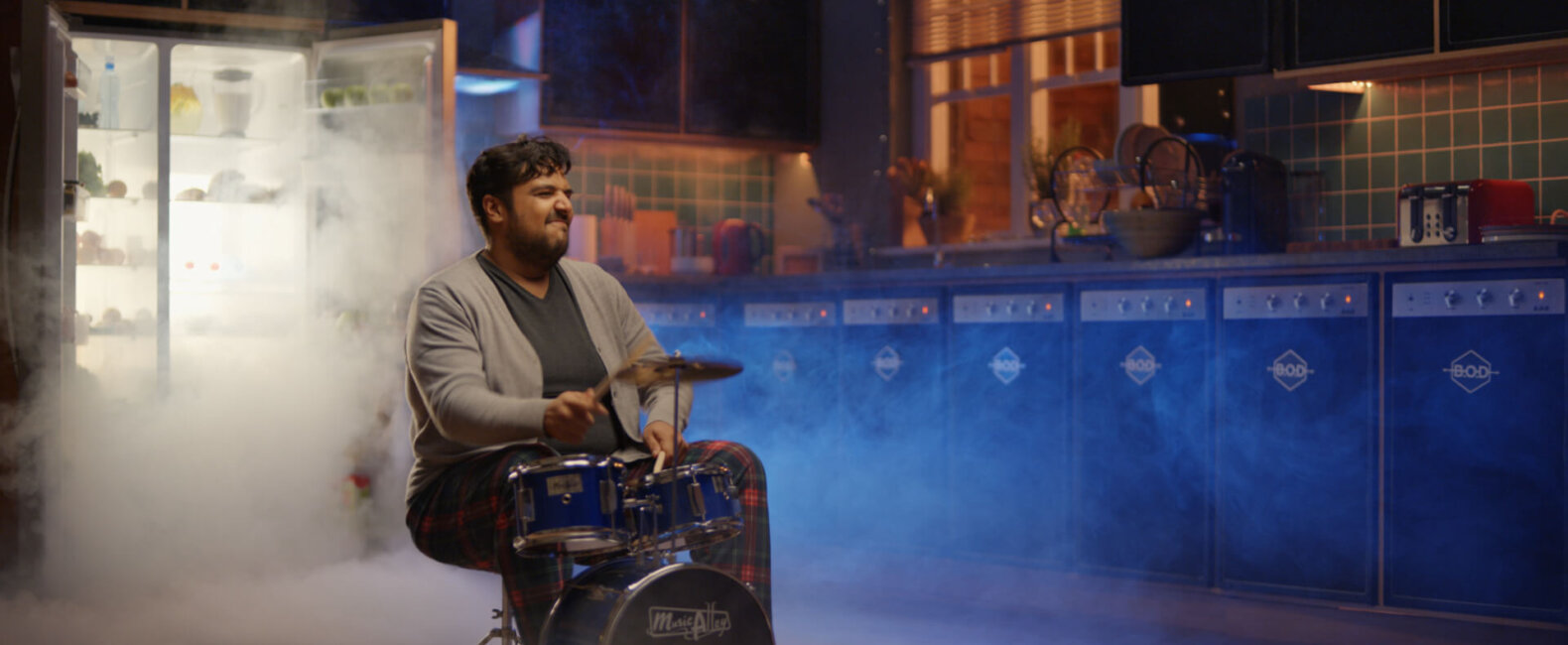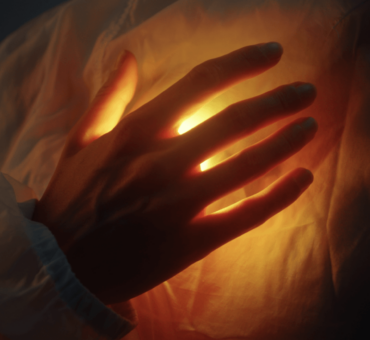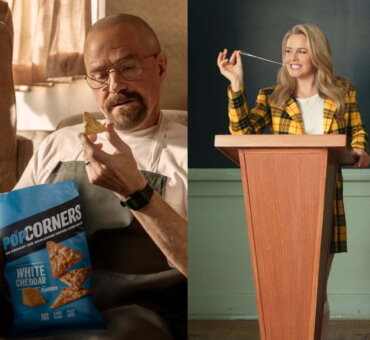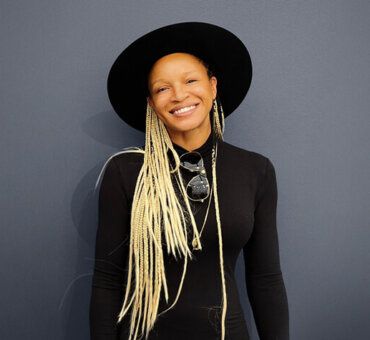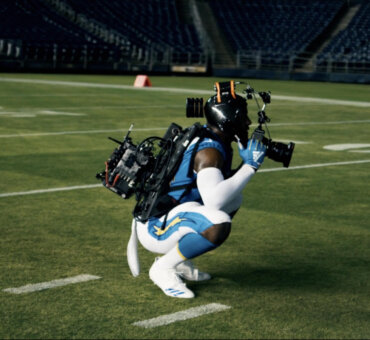Sometimes, you’ve just gotta shoot your shot. After returning from paternity leave, Creative Director Danny Hunt called a meeting with the executive creative directors at The&Partnership and said, “I want the Argos account.” And that was that. He went on to create the iconic “Book of Dreams” spot, along with a massively successful digital activation, that helped catapult his career even further.
But, it wasn’t just the job that helped his career. It was the goal:
“In my career, I’d lost my way for a few years, probably for loads of reasons. I felt like I bumbled around from brief to brief. I was drifting around. And then, I set this 12-month goal and it really focused me and focused my thinking,” Danny told us.
There’s an element of recklessness to taking a chance, but that’s everything for a creative. And, once you’ve boxed yourself into a corner all you have to do is fight your way out. We had the chance to talk with Danny about this incredibly unique, ambitious campaign and his creative team’s mission to “win Christmas,” as he puts it.
In our conversation, he talks about his creative process, casting process, and whether or not he and his team beat John Lewis. Here’s Danny Hunt.
Filmsupply: How did you get onto the Argos account initially?
Hunt: At that point with The&Partnership, I’d taken a bit of time off for parental leave when I had my second kid. I was at Saatchi when I had my first and then I moved jobs. It stressed me out a lot. I wasn’t good at work, I wasn’t very good at home, I felt I was just no good at anything, you know what I mean? So I took four months off and it was amazing, it was great to have a reset, spend time with the family.
During that time, I hatched a plan. When I came back, I wanted Argos. I wanted to win Christmas. That was my main plan. We went out for coffee with ECDs and I said, “I’ve been away. I feel different. I want a new account with Argos. See how it goes and, if I let you down, you can fire me.”
It was wicked. They could see the hunger, that I wanted to do something with it. And then, they gave us a crack on it. The first two ads built a relationship with the client. With the Christmas campaign, I saw an opportunity to try and win Christmas and create the best ad. I literally put on the brief that we meant to win Christmas. I was just obsessed with beating John Lewis. I was like a madman, but it wasn’t just me; it was my team.
We set this goal to do something really, really good. Everything leads to that. So all your reviews are like, “Is it going to win Christmas?” In all of our meetings, we got the client to buy into that. And the client was great. In England, our Christmas is like the American Super Bowl.
How do you get a client to buy into something big like that?
Getting them to want to win Christmas was the main thing. Once they agreed to that, well then, you have to go big because we’re up against John Lewis and Sainsbury’s. We got them on board early before the brief, and that created a lot of energy. So, when we took the script in, they’d already bought into the idea. I said, “We want to make a music video. This is how we’re going to do it.” Everything kind of fell from that really.
I presented the big idea: “The Book of Dreams.” I changed the Argos catalog. I talked about what it meant to people, how kids grew up on it. For me, I remember being a kid and going through it on the floor by my dad’s feet. We all grew up with the Argos catalog, circling stuff, and imagining what could happen. I flipped the catalog and said “we’re going to rebrand it to the Book of Dreams.”
I think we had two weeks to go away and write something. Then, about 20 reviews later we came back with the thought that it’s a dad’s dream that makes the magic, not a kid’s dream. I think it was a really good leap because there were loads of kids’ dreams. And I felt like it was a bit obvious. But, then when we got to the dad’s dream, I was like, “Right, that felt really fresh.”
Do you think your boldness to ask for the account informed your creative process?
I think it did. Having a purpose professionally, and in life as well, is really important. In my career, I’d lost my way for a few years. Probably for loads of reasons. I felt like I bumbled around from brief to brief. I was drifting around. And then, I set this 12-month goal and it really focused me and focused my thinking. It probably made me a bit braver as well. I’m always pretty bold with everything that I do. But, it definitely gave me a focus and gave me a drive. You need a purpose.
Once you get into production, it seems like everything hinged on casting, right?
I’d say the most stressful part was the casting. It was really hard to find a little girl who could drum like that. And apparently, I didn’t know this, but drumming’s the hardest thing to fake. If you’re not a drummer, drummers will pick you out and the camera will pick you out and it’s all about the way you sit and the way you hold the sticks.
It was really touch and go, because we did a big casting session. We cast in America, China, and Japan. We cast all over the world. We’re having videos sent. It must have taken a month to get to the day we all went to the casting studio for callbacks. These kids were coming in and we didn’t see Nandi [Bushell] until two in the afternoon. As the day’s going, I’m just feeling sicker and sicker and sicker thinking, This fucking ad’s not going to work.
And then, Nandi came in and picked up the sticks. She started drumming and she had these little bungees in her hair, which we eventually decided to keep for the ad. After that, I just went to the pub. Literally me and the producer, Andy Roberts, left the casting and we went for a pint. He sent me the picture the other day. It was the best pint ever.
That’s great. Pure relief.
Such relief. And Nandi’s famous now, isn’t she? She’s doing tracks with Lenny Kravitz, the dude from Foo Fighters. She was on the Letterman show. She’s really gone through the roof. She’s a local kid as well, which is nice.The photo of Danny and Andy after nailing their casting.
Did you know what song you were going to use heading into auditions?
We had the song. Yeah. We literally went through every song in the world to get to that. Our creative team members were both straight out of college. This was the first job they’d done. So this was a massive education for them. We went through plenty of different genres as well. Drumming was really prominent in the ‘80s, where you go ‘90s and naughts and it gets very guitar-like so it didn’t work.
We ended up going to the ‘80s for that reason and because it had to be the dad’s dream, right, so it had to be hit dad songs, not kids’ songs. So, we just went through everything. We bought that track, and that’s why we shot it like a music video. They’re hitting every beat, they’re playing everything. It was all in-camera. There was no, “Let’s just hit a beat and then put a track to it later,” because you’d have lost a lot of authenticity in that.
The track’s so old as well, there was a lot of stuff we couldn’t do with it, which is why the time length ended up being the time length it was. That’s the best we could do with the track to get it like that. Now, everything’s up on the computer. Where back then they literally went in the studio, recorded it and that’s what you’ve got. The bit where they go down the stairs and you hear that synth, that took us three weeks to find that synth. We had to ship it over from America and there’s one of them left. It was really nerdy. The sound guy was loving it.
So now looking back, did you win Christmas?
I’d say we did. I think the awards say we did. I got lots of messages from lots of people in the industry who thought we smashed it. And then, IKEA came out and just destroyed everything. But, they kind of cheated it a bit. They just had a Christmas tree in there. For the traditional people who do Christmas and the Christmas-ey ads, I think we pulled it off. Read our conversation with director Rayka Zehtabchi about pushing brands to be bold in their work.
